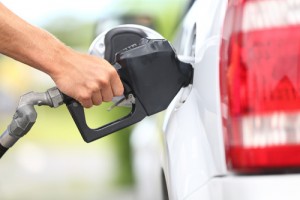 Several Americans are using the recent drop in gas prices as an excuse to buy an SUV or another less fuel efficient vehicle. In fact, in the second half of 2014, sales of larger vehicles have risen by more than ten percent while sales of smaller vehicles have fallen by just under ten percent. But when you look at gas prices in a historical context, this recent trend may not prove to be financially sound.
Several Americans are using the recent drop in gas prices as an excuse to buy an SUV or another less fuel efficient vehicle. In fact, in the second half of 2014, sales of larger vehicles have risen by more than ten percent while sales of smaller vehicles have fallen by just under ten percent. But when you look at gas prices in a historical context, this recent trend may not prove to be financially sound.
The math that goes into the decision to buy a larger vehicle seems simple enough. Gas prices have dropped by roughly $1.30 per gallon over the past six months, which can mean an annual savings of anywhere from $600 to $1000 depending on how many miles you drive over the course of the year. That savings means the impact at the pump becomes less of a consumer priority.
But, those savings are based on current prices, and don’t take into account how prices may fluctuate over the lifespan of the vehicle they are about to purchase. Before dropping fuel efficiency down the list of priorities in your next vehicle, it is important to consider two factors; the length of time you will have the vehicle and the amount of time it takes for gas prices to rise again.
As reported on kbb.com, Polk Research shows that most Americans who purchased a new car within the last two years plan to keep it for at least 6 years. Also, a poll conducted by automd.com said that more than three quarters of Americans now keep their vehicles for more than a decade. Better manufacturing and longer manufacturers’ warranties have both contributed to this extended lifespan.
So if people are keeping their cars longer, how long will they have to take advantage of lower fuel prices? According to gasbuddy.com, the last time prices fell below $2.00 per gallon was in December of 2008. By the summer of 2009, the price had already climbed back above $2.60 per gallon. It reached $3.00 per gallon in late 2010, and has stayed in the $3.25 – $4.00 range ever since.

Chart Image Source: Gasbuddy.com
That would mean that if history were to repeat itself, an SUV driver would spend roughly $600 less in the first six months than they would if gas were still at mid-summer 2014 prices. They would also spend about $700 less over the next twelve month period. After that, the perceived savings would completely evaporate, leaving you with a gas guzzling drain on your wallet for the next four and a half years.
Also, before gas prices dropped in 2008, the average price for the previous four years was $2.50 – $3.00 per gallon. Following the dip in 2008, gas prices settled in at roughly $.75 – $1.00 higher than they had been from 2005 – 2008. If that were to happen again, it would mean that prices would be higher in two and a half years than they were in the summer of 2014, ranging anywhere from $3.75 – $4.50 per gallon.
Another approach would be to double down on those savings by buying a Jetta. The Jetta’s 36 miles per gallon on the highway is twelve to fifteen miles per gallon more than most SUV’s, making them less susceptible to the fluctuations at the pump. While SUV drivers can point to how the temporary difference in price benefits their wallets, Jetta owners can point to an overall savings throughout the lifespan of the vehicle regardless of gas prices (see graphic).

If the current dip in gas prices lasts longer than it did at the end of 2009, a fuel efficient vehicle like a Jetta still shows a savings at the pump. Though the gap does narrow, if prices were to hold at $2.00 per gallon for the next six years, Jetta owners would pay roughly $6258 for gas while the average SUV owner would shell out an estimated $9840. This is a savings of $3,582 in gas alone. With this sort of savings, isn’t it time you learned a little more about the Jetta?


![[Facebook]](https://www.southpointvw.com/blogs/1057/wp-content/plugins/bookmarkify/facebook.png)
![[LinkedIn]](https://www.southpointvw.com/blogs/1057/wp-content/plugins/bookmarkify/linkedin.png)
![[Twitter]](https://www.southpointvw.com/blogs/1057/wp-content/plugins/bookmarkify/twitter.png)
![[Yahoo!]](https://www.southpointvw.com/blogs/1057/wp-content/plugins/bookmarkify/yahoo.png)
![[Email]](https://www.southpointvw.com/blogs/1057/wp-content/plugins/bookmarkify/email.png)
